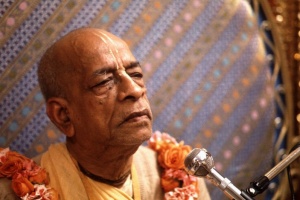CC Adi 12.81 (1975): Difference between revisions
(Vanibot #0027: CCMirror - Mirror CC's 1996 edition to form a basis for 1975) |
(Vanibot #0020: VersionCompareLinker - added a link to the Version Compare feature) |
||
| Line 2: | Line 2: | ||
<div style="float:left">'''[[Sri Caitanya-caritamrta (1975)|Śrī Caitanya-caritāmṛta (1975)]] - [[CC Adi (1975)|Ādi-līlā]] - [[CC Adi 12 (1975)|Chapter 12: The Expansions of Advaita Acārya and Gadādhara Paṇḍita]]'''</div> | <div style="float:left">'''[[Sri Caitanya-caritamrta (1975)|Śrī Caitanya-caritāmṛta (1975)]] - [[CC Adi (1975)|Ādi-līlā]] - [[CC Adi 12 (1975)|Chapter 12: The Expansions of Advaita Acārya and Gadādhara Paṇḍita]]'''</div> | ||
<div style="float:right">[[File:Go-previous.png|link=CC Adi 12.80 (1975)|Ādi-līlā 12.80]] '''[[CC Adi 12.80 (1975)|Ādi-līlā 12.80]] - [[CC Adi 12.82 (1975)|Ādi-līlā 12.82]]''' [[File:Go-next.png|link=CC Adi 12.82 (1975)|Ādi-līlā 12.82]]</div> | <div style="float:right">[[File:Go-previous.png|link=CC Adi 12.80 (1975)|Ādi-līlā 12.80]] '''[[CC Adi 12.80 (1975)|Ādi-līlā 12.80]] - [[CC Adi 12.82 (1975)|Ādi-līlā 12.82]]''' [[File:Go-next.png|link=CC Adi 12.82 (1975)|Ādi-līlā 12.82]]</div> | ||
{{CompareVersions|CC|Adi 12.81|CC 1975|CC 1996}} | |||
{{RandomImage}} | {{RandomImage}} | ||
==== TEXT 81 ==== | ==== TEXT 81 ==== | ||
| Line 18: | Line 17: | ||
<div class="synonyms"> | <div class="synonyms"> | ||
ananta | ananta ācārya—of the name Ananta Ācārya; kavi-datta—of the name Kavi Datta; miśra-nayana—of the name Nayana Miśra; gaṅgāmantrī—of the name Gaṅgāmantrī; māmu ṭhākura—of the name Māmu Ṭhākura; kaṇṭhābharaṇa—of the name Kaṇṭhābharaṇa. | ||
</div> | </div> | ||
| Line 32: | Line 31: | ||
<div class="purport"> | <div class="purport"> | ||
Verses 197 and 207 of the Gaura-gaṇoddeśa-dīpikā describe Kavi Datta as the gopī named Kalakaṇṭhī, verses 196 and 207 describe Nayana Miśra as the gopī named Nitya-mañjarī, and verses 196 and 205 describe Gaṅgāmantrī as the gopī named Candrikā. Māmu Ṭhākura, whose real name was Jagannātha Cakravartī, was the nephew of Śrī Nīlāmbara Cakravartī, Śrī Caitanya Mahāprabhu's grandfather. In Bengal a maternal uncle is called māmā, and in East Bengal and Orissa, māmu. Thus Jagannātha Cakravartī was known as Māmā or Māmu Ṭhākura. Māmu Ṭhākura's residence was in the district of Faridpur in the village known as Magaḍobā. After the demise of Śrī Gadādhara Paṇḍita, Māmu Ṭhākura became the priest in charge of the temple known as Ṭoṭā-gopīnātha in Jagannātha Purī. According to the opinion of some Vaiṣṇavas, Māmu Ṭhākura was formerly known as Śrī Rūpa-mañjarī. The followers of Māmu Ṭhākura were Raghunātha Gosvāmī, Rāmacandra, Rādhāvallabha, Kṛṣṇajīvana, Śyāmasundara, Śāntāmaṇi, Harinātha, Navīnacandra, Matilāla, Dayāmayī and Kuñjavihārī. | |||
Kaṇṭhābharaṇa, whose original name was Śrī Ananta Caṭṭarāja, was the gopī named Gopālī in kṛṣṇa-līlā. | Kaṇṭhābharaṇa, whose original name was Śrī Ananta Caṭṭarāja, was the gopī named Gopālī in kṛṣṇa-līlā. | ||
Latest revision as of 14:51, 26 January 2020

A.C. Bhaktivedanta Swami Prabhupada
TEXT 81
- ananta ācārya, kavidatta, miśra-nayana
- gaṅgāmantrī māmu ṭhākura, kaṇṭhābharaṇa
SYNONYMS
ananta ācārya—of the name Ananta Ācārya; kavi-datta—of the name Kavi Datta; miśra-nayana—of the name Nayana Miśra; gaṅgāmantrī—of the name Gaṅgāmantrī; māmu ṭhākura—of the name Māmu Ṭhākura; kaṇṭhābharaṇa—of the name Kaṇṭhābharaṇa.
TRANSLATION
The fifth branch was Ananta Ācārya; the sixth, Kavi Datta; the seventh, Nayana Miśra; the eighth, Gaṅgāmantrī; the ninth, Māmu Ṭhākura; and the tenth, Kaṇṭhābharaṇa.
PURPORT
Verses 197 and 207 of the Gaura-gaṇoddeśa-dīpikā describe Kavi Datta as the gopī named Kalakaṇṭhī, verses 196 and 207 describe Nayana Miśra as the gopī named Nitya-mañjarī, and verses 196 and 205 describe Gaṅgāmantrī as the gopī named Candrikā. Māmu Ṭhākura, whose real name was Jagannātha Cakravartī, was the nephew of Śrī Nīlāmbara Cakravartī, Śrī Caitanya Mahāprabhu's grandfather. In Bengal a maternal uncle is called māmā, and in East Bengal and Orissa, māmu. Thus Jagannātha Cakravartī was known as Māmā or Māmu Ṭhākura. Māmu Ṭhākura's residence was in the district of Faridpur in the village known as Magaḍobā. After the demise of Śrī Gadādhara Paṇḍita, Māmu Ṭhākura became the priest in charge of the temple known as Ṭoṭā-gopīnātha in Jagannātha Purī. According to the opinion of some Vaiṣṇavas, Māmu Ṭhākura was formerly known as Śrī Rūpa-mañjarī. The followers of Māmu Ṭhākura were Raghunātha Gosvāmī, Rāmacandra, Rādhāvallabha, Kṛṣṇajīvana, Śyāmasundara, Śāntāmaṇi, Harinātha, Navīnacandra, Matilāla, Dayāmayī and Kuñjavihārī.
Kaṇṭhābharaṇa, whose original name was Śrī Ananta Caṭṭarāja, was the gopī named Gopālī in kṛṣṇa-līlā.